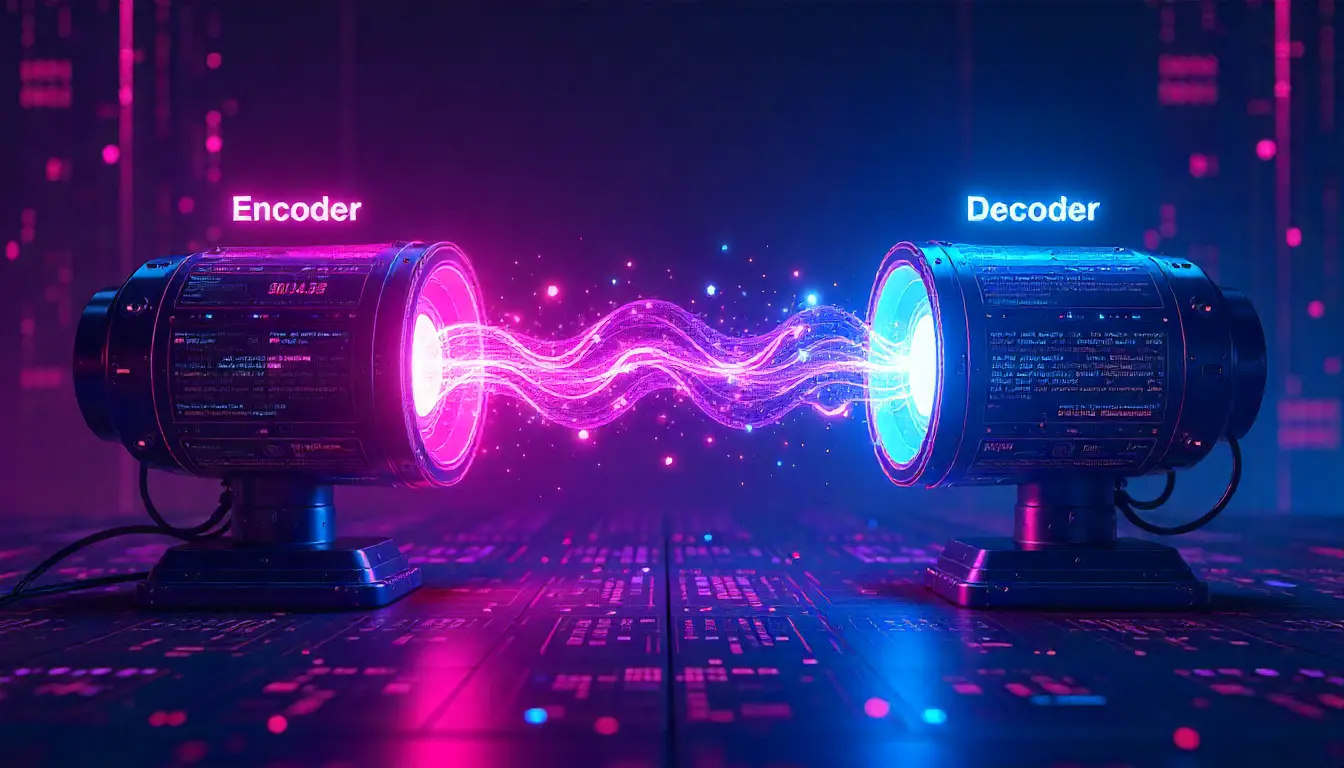Encoder-Decoder Architecture

Share
Table of contents:

Encoder-Decoder architecture is a framework widely used in deep learning, particularly for sequence-to-sequence tasks. This architecture is prevalent in applications such as machine translation, text summarization, image captioning, and speech recognition. The design consists of two main components: the encoder and the decoder, each serving distinct functions while collaborating to process and generate sequences.
Encoder
The encoder processes the input data and transforms it into a fixed-size context vector, which captures the essential information needed for the decoder. This transformation is typically accomplished through a series of layers composed of recurrent neural networks (RNNs), long short-term memory networks (LSTMs), or gated recurrent units (GRUs). The choice of architecture can vary, but each aims to capture sequential dependencies within the input data.
- Input Representation: The encoder takes an input sequence, often represented as a series of vectors, where each vector corresponds to a word or token in the sequence. These vectors are typically derived from word embeddings that encode semantic meaning. For example, a sentence might be transformed into a matrix where each row corresponds to a word's vector representation.
- Hidden States: As the encoder processes the input sequence, it generates hidden states at each time step. The hidden state captures information about the current input token and retains context from previous tokens. The final hidden state after processing the entire input sequence becomes the context vector. Mathematically, the hidden state can be expressed as follows:
h_t = f(W * x_t + U * h_{t-1} + b)
where h_t is the hidden state at time t, x_t is the input vector at time t, W and U are weight matrices, and b is the bias term. The function f typically represents a non-linear activation function, such as tanh or ReLU.
- Context Vector: The final hidden state or the last output of the encoder becomes the context vector (C), summarizing the entire input sequence. The context vector serves as a compact representation that encapsulates the necessary information for the decoder to generate the output.
Decoder
The decoder is responsible for generating the output sequence based on the context vector provided by the encoder. Similar to the encoder, the decoder may also utilize RNNs, LSTMs, or GRUs to handle sequential data generation.
- Initialization: The decoder starts its operation by initializing its hidden state with the context vector from the encoder. This initialization is crucial, as it enables the decoder to have access to the entire input sequence’s information when generating each output token.
- Sequence Generation: The decoder generates the output sequence one token at a time. At each time step, the decoder takes the previous output token and the hidden state to produce the next token in the sequence. The decoding process can be described mathematically as follows:
y_t = g(W' * h_t + b')
where y_t is the predicted output at time t, h_t is the hidden state of the decoder, W' is the output weight matrix, and b' is the output bias term. The function g typically applies a softmax activation to yield a probability distribution over the vocabulary for the next token.
- Teacher Forcing: During training, a technique called teacher forcing is often used, where the decoder receives the actual previous output token (rather than the generated token) as input for the next time step. This approach accelerates training and improves convergence by providing the decoder with accurate information.
Attention Mechanism
In practice, encoder-decoder architectures are frequently enhanced with attention mechanisms, which allow the decoder to focus on different parts of the input sequence when generating each token. The attention mechanism calculates a set of attention scores based on the context vector and the decoder's hidden states, effectively allowing the model to selectively weigh the contributions of different input tokens. This dynamic focus significantly improves the model's performance, particularly for long sequences.
Mathematically, the attention score (α) can be computed using:
α_{ij} = softmax(score(h_{i}, s_{j}))
where score is a function that measures the compatibility between the encoder hidden states (h_i) and the decoder hidden state (s_j).
The encoder-decoder architecture has become a foundational structure in various natural language processing (NLP) tasks. In machine translation, for instance, the encoder processes the source language input, and the decoder generates the corresponding target language output. In image captioning, the encoder can be a convolutional neural network (CNN) that extracts features from an image, while the decoder generates descriptive text based on these features.
Numerous variations of the encoder-decoder architecture have emerged to address specific tasks or improve performance. Examples include:
- Transformers: A notable variant that eliminates recurrence entirely, using self-attention mechanisms to process input and output sequences in parallel. This architecture has achieved state-of-the-art results in many NLP benchmarks.
- Seq2Seq with Attention: Combines the traditional encoder-decoder framework with attention mechanisms to allow the decoder to focus on relevant parts of the input sequence dynamically.
In summary, the encoder-decoder architecture is a powerful framework for sequence modeling, enabling effective transformations of input sequences into output sequences through the collaborative functions of encoders and decoders. Its ability to adapt and incorporate additional mechanisms like attention has made it essential in advancing many areas of artificial intelligence, particularly in natural language processing and related fields.











